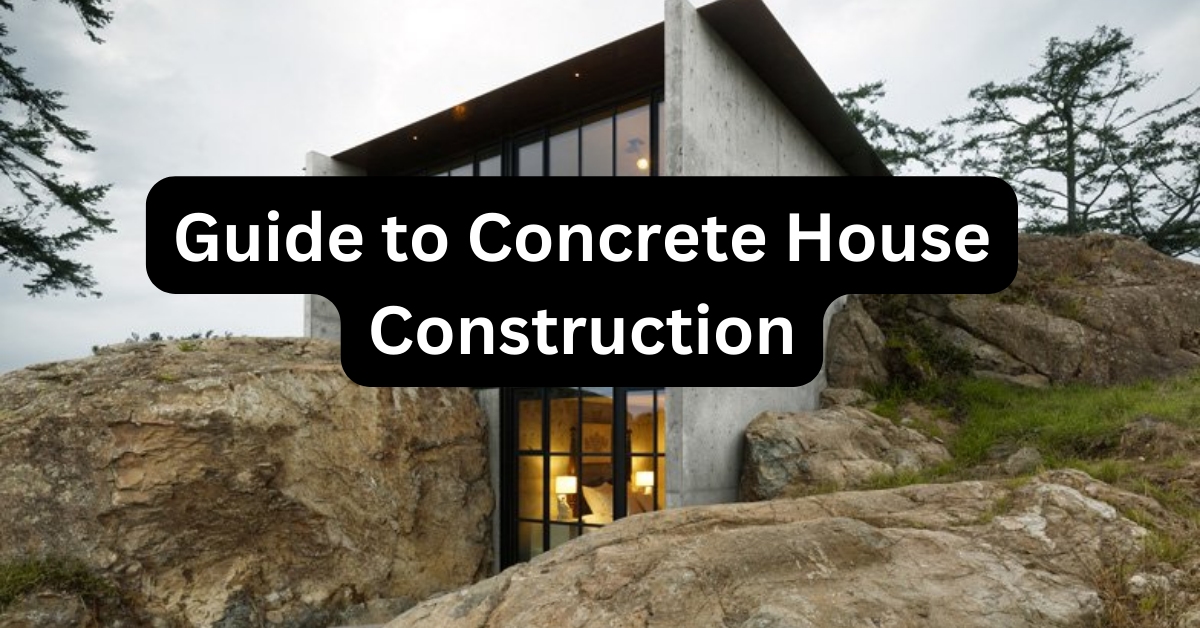The Ultimate Guide to Concrete Houses Construction
Concrete homes are gaining popularity for their strength, longevity, and ability to withstand harsh weather. As natural disasters like hurricanes, wildfires, and floods become more common, homeowners seek durable, energy-efficient solutions. This guide dives deep into concrete house construction, explaining why it’s a smart choice, how it’s done, and what to consider before building. It covers key benefits like disaster resistance and low upkeep, alongside challenges such as high costs and insulation needs
Why Choose a Concrete Home?
Concrete homes stand out for their strength and benefits. They last for decades, resist disasters, and save energy. Here’s why they’re worth considering:
- Lasts a Lifetime: Concrete doesn’t rot, get eaten by termites, or wear out easily. It can stand strong for 50–100 years with little upkeep (NAHB, 2023).
- Fights Disasters: These homes hold up against hurricanes, wildfires, floods, and earthquakes. They’re a smart choice in risky areas.
- Saves Energy: Concrete’s thermal mass keeps homes cool in summer and warm in winter. This cuts energy bills by 20–30% (U.S. Department of Energy).
- Low Upkeep: Unlike wood homes, concrete needs fewer repairs, saving money over time.
- Eco-Friendly: Using recycled materials in concrete mixes helps the planet.
The Ultimate Guide to Concrete Home Construction
Building a concrete home uses different methods. Each has unique benefits and challenges. Here’s how it’s done.
1. Insulated Concrete Forms (ICF)
ICF uses foam molds filled with concrete. The foam stays, adding insulation. This method is strong, fireproof, and energy-saving. ICF walls can have R-values of 20–40, keeping homes cozy. It’s popular for easy setup, but you need skilled workers to do it right. And here is the best suggestion for your home concrete coating service.
2. Precast Concrete Panels
Precast homes use concrete panels made in a factory. Workers put them together on-site. This method is quick and reliable, cutting build time by 20%. It’s great for fast projects, but factory costs and shipping can make it pricey.
3. Monolithic Pours and Domes
Monolithic pours create a single, solid concrete structure. Domes, a special type, are super strong, handling winds up to 200 mph. But pours are limited to 12–14 feet for safety and codes, so taller homes need multiple pours, adding time and cost.
4. 3D-Printed Concrete Homes
3D printing builds homes by layering concrete with a machine. It’s fast, some homes take 24–48 hours, and saves 10–20% compared to regular concrete builds. It allows cool shapes, but not all builders offer it yet.
5. Cast-in-Place Concrete
This method pours concrete into forms on-site. It’s flexible for custom designs but takes more work. Formwork can be 40–60% of the cost. It’s best for those with expert builders and bigger budgets.
| Construction Method | Cost per Sq. Ft. (USD) | Build Speed | Insulation (R-Value) | Durability (Lifespan) |
|---|---|---|---|---|
| Insulated Concrete Forms (ICF) | $150–$200 | Moderate (2–4 months) | High (20–40) | 50–100+ years |
| Precast Concrete | $140–$180 | Fast (1–3 months) | Moderate (15–25 with added insulation) | 50–100+ years |
| Monolithic Pours/Domes | $160–$220 | Moderate (2–4 months) | Low (10–15, needs insulation) | 75–100+ years |
| 3D-Printed Concrete | $120–$170 | Very Fast (24–48 hours) | Moderate (15–25 with insulation) | 50–100+ years |
| Cast-in-Place | $150–$250 | Slow (3–6 months) | Low (10–15, needs insulation) | 50–100+ years |
Challenges of Concrete Home Construction
Concrete homes have amazing benefits, but they come with hurdles. Knowing these helps you plan better.
- High Costs: Building with concrete costs $150–$250 per square foot, compared to $100–$150 for wood. Formwork alone can be 40–60% of the budget.
- Insulation Needs: Concrete conducts heat easily, so it needs extra insulation like foam or mineral wool to reach R-values of 30+.
- Plumbing and Wiring: Pipes and wires must be planned before pouring. Adding them later is tough and expensive.
- Skilled Workers: Concrete construction needs experts who understand ICF, precast, or domes.
- Climate Fit: Concrete works great in hot, humid areas but needs more insulation in cold places.
Cost Breakdown: Worth It?
Concrete homes cost more at first but save money later. Expect $150–$250 per square foot vs. $100–$150 for wood. Energy bills drop by $500–$1,000 a year. Maintenance is 50% less than wood over 20 years. In storm or fire-prone areas, insurance savings of 15–25% help.
Costs vary by method, labor, and local rules. Formwork and skilled workers add up, especially for cast-in-place builds.
Need a Trusted team to bring your vision to life? Contact a professional construction company to start your project.
Design and Style Options
Concrete homes can look sleek and modern. Exposed concrete walls create a bold, industrial feel. Fiber cement siding adds a clean finish. 3D printing or precast panels allow unique shapes like curves or domes.
Inside, thick walls make deep window sills. These can be shelves or seats, adding style and function.
Tips for Building a Concrete Home
Here’s how to make your project smooth:
- Hire builders skilled in ICF, precast, or domes.
- Plan plumbing and electrical lines before pouring concrete.
- Check local codes for pour limits and insulation needs.
- Use foam or mineral wool for better insulation.
- Consider 3D printing for a faster, cheaper build.
Conclusion
Concrete home construction builds strong, disaster-proof houses that last for decades. They save energy and cut maintenance costs, though they cost more upfront ($150–$250 per square foot). From ICF to 3D printing, there are options for every goal. Think about your budget and location, then find a skilled builder to bring your concrete home to life. It’s a smart choice for a safe, lasting future.
